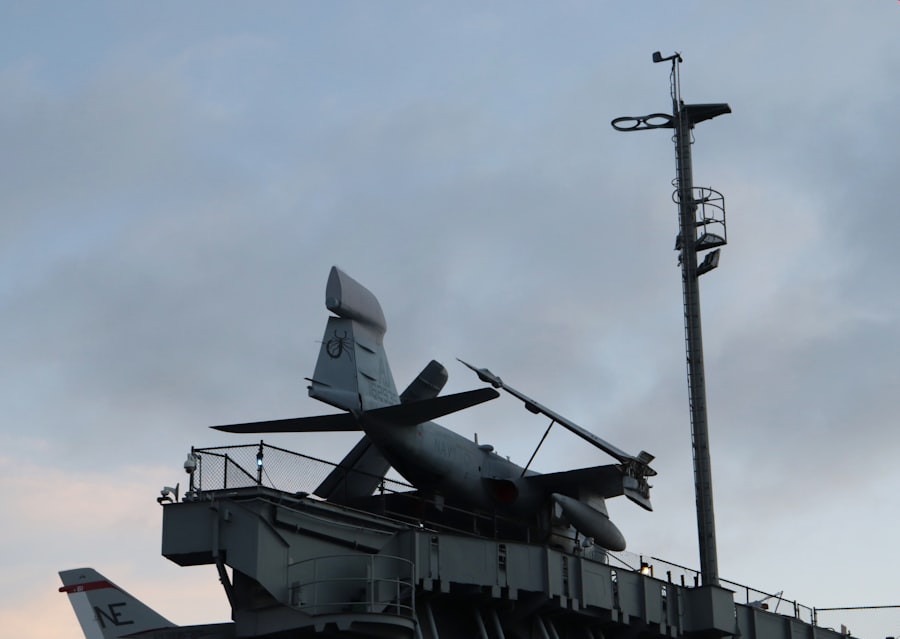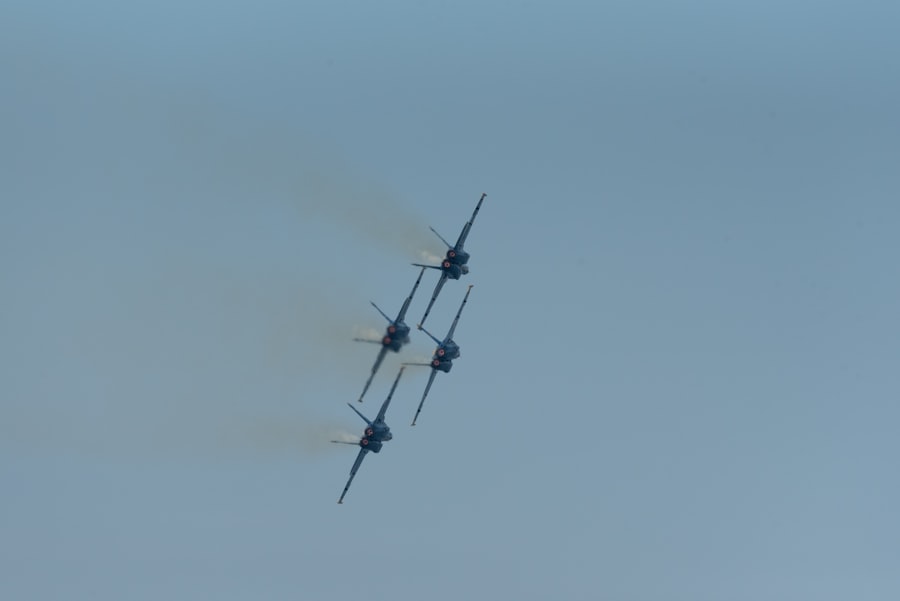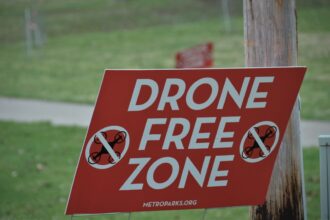Anti-air defense systems have become a cornerstone of modern military strategy, designed to protect nations from aerial threats ranging from enemy aircraft to missiles. These systems encompass a variety of technologies and methodologies aimed at detecting, tracking, and neutralizing airborne threats before they can inflict damage. The evolution of anti-air defense has been driven by the increasing sophistication of aerial threats, necessitating a continuous advancement in defensive capabilities.
As nations invest in these systems, the landscape of warfare is being reshaped, highlighting the critical importance of air superiority in contemporary conflicts. The historical context of anti-air defense systems reveals a trajectory marked by innovation and adaptation. From the rudimentary anti-aircraft guns of World War I to the advanced missile systems of today, the development of these technologies has been influenced by both technological advancements and the changing nature of warfare.
As aerial threats have evolved, so too have the strategies and systems designed to counter them. This article will explore the current challenges faced by anti-air defense systems, the latest advancements in technology, and the future trends that will shape their effectiveness in safeguarding airspace.
Key Takeaways
- Anti-air defense systems are crucial for protecting assets from aerial threats.
- Current challenges in anti-air defense include evolving and sophisticated threats from adversaries.
- Advancements in radar and sensor technology have improved the detection and tracking of aerial threats.
- Innovations in missile defense systems have enhanced the capability to intercept and neutralize incoming threats.
- The integration of artificial intelligence and drone technology has revolutionized anti-air defense capabilities.
Current Challenges in Anti-Air Defense
Despite significant advancements in anti-air defense technologies, several challenges persist that complicate their effectiveness. One of the primary issues is the increasing sophistication of aerial threats. Modern adversaries are employing stealth technology, making it difficult for traditional radar systems to detect and track them.
Stealth aircraft and missiles are designed to minimize their radar cross-section, allowing them to evade detection until they are dangerously close to their targets. This evolution in threat capabilities necessitates a reevaluation of existing defense strategies and technologies. Another challenge lies in the sheer volume of potential threats that modern anti-air defense systems must contend with.
The proliferation of drones and unmanned aerial vehicles (UAVs) has introduced a new dimension to aerial warfare. These platforms can be deployed in swarms, overwhelming traditional defense systems with their numbers and agility. Additionally, the rise of hypersonic missiles presents a formidable challenge due to their incredible speed and maneuverability, which can outpace existing interception technologies.
As adversaries continue to innovate, anti-air defense systems must adapt rapidly to maintain their effectiveness.
Advancements in Radar and Sensor Technology

In response to the evolving landscape of aerial threats, significant advancements have been made in radar and sensor technology. Modern radar systems are increasingly capable of detecting stealthy targets through advanced signal processing techniques and multi-frequency operations. Phased array radars, for instance, allow for rapid scanning of large areas and can track multiple targets simultaneously, providing a comprehensive picture of the airspace.
These advancements enhance situational awareness for military operators, enabling quicker decision-making in response to potential threats. Moreover, sensor fusion technology has emerged as a critical component in modern anti-air defense systems. By integrating data from various sensors—such as radar, infrared, and electro-optical systems—military forces can create a more accurate and holistic view of the battlefield.
This integration allows for improved target identification and tracking, reducing the likelihood of false alarms and enhancing overall system reliability. As these technologies continue to evolve, they will play a pivotal role in bolstering the effectiveness of anti-air defense systems against increasingly sophisticated threats.
Innovations in Missile Defense Systems
| Country | Missile Defense System | Innovation |
|---|---|---|
| United States | THAAD | Hit-to-Kill Technology |
| Russia | S-400 | Multiple Target Tracking |
| Israel | Iron Dome | Integration of Radar and Interceptor |
| China | HQ-9 | Anti-radiation Capability |
The realm of missile defense has witnessed remarkable innovations aimed at countering both ballistic and cruise missile threats. Advanced missile defense systems utilize a combination of kinetic interceptors and directed energy weapons to neutralize incoming threats effectively. Kinetic interceptors are designed to collide with incoming missiles at high speeds, while directed energy weapons employ lasers or high-powered microwaves to disable or destroy targets before they reach their intended destination.
One notable advancement is the development of layered missile defense architectures that provide multiple lines of defense against various types of threats. These systems integrate short-range, medium-range, and long-range interceptors to create a comprehensive shield against incoming missiles. By employing a multi-tiered approach, military forces can enhance their chances of intercepting threats at different stages of flight, thereby increasing overall system resilience.
As innovations continue to emerge in missile defense technology, nations are better equipped to safeguard their airspace from an array of missile threats.
The Role of Artificial Intelligence in Anti-Air Defense
Artificial intelligence (AI) is revolutionizing anti-air defense systems by enhancing decision-making processes and automating various functions within these complex systems. AI algorithms can analyze vast amounts of data from multiple sources in real-time, allowing for quicker identification and classification of potential threats. This capability is particularly crucial in high-stakes scenarios where rapid responses are essential for effective defense.
Furthermore, AI-driven predictive analytics can improve threat assessment by identifying patterns and trends in aerial activity. By leveraging machine learning techniques, these systems can adapt over time, becoming more proficient at distinguishing between benign and hostile targets. The integration of AI not only streamlines operations but also reduces the cognitive load on human operators, enabling them to focus on strategic decision-making rather than being overwhelmed by data processing tasks.
Integration of Drone Technology in Anti-Air Defense

The integration of drone technology into anti-air defense systems represents a significant shift in how nations approach aerial threats. Drones can serve multiple roles within these systems, from surveillance and reconnaissance to active engagement with hostile targets. Their agility and versatility make them valuable assets for enhancing situational awareness and providing real-time intelligence on potential threats.
Moreover, drones can be deployed as part of a layered defense strategy, working alongside traditional missile defense systems to create a more robust protective network. For instance, drones equipped with advanced sensors can detect incoming threats at greater distances, allowing ground-based interceptors more time to prepare for engagement. Additionally, swarming drone technology has emerged as a potential game-changer, enabling coordinated attacks on enemy assets or overwhelming defenses through sheer numbers.
Advancements in Electronic Warfare and Countermeasure Systems
Electronic warfare (EW) has become an integral component of modern anti-air defense strategies, providing military forces with tools to disrupt or deceive enemy radar and communication systems. Advancements in EW technologies have led to the development of sophisticated jamming techniques that can render enemy sensors ineffective or mislead them regarding the location and nature of friendly forces. Countermeasure systems have also evolved significantly, with innovations such as decoys and electronic countermeasures designed to confuse or misdirect incoming missiles.
These systems can create false targets or emit signals that mimic friendly aircraft, diverting enemy fire away from critical assets. As adversaries continue to develop advanced targeting technologies, the importance of effective electronic warfare capabilities cannot be overstated; they serve as a vital line of defense against sophisticated aerial threats.
Future Trends in Anti-Air Defense
Looking ahead, several trends are likely to shape the future landscape of anti-air defense systems. One prominent trend is the increasing emphasis on network-centric warfare, where interconnected systems share information seamlessly across platforms.
Additionally, there is a growing focus on developing hypersonic defense capabilities as nations seek to counter emerging threats posed by hypersonic missiles. Research into advanced interception technologies that can engage these fast-moving targets is underway, with an emphasis on speed and precision. As technological advancements continue to unfold, anti-air defense systems will need to evolve rapidly to address these emerging challenges effectively.
The Impact of Space-based Defense Systems
The role of space-based defense systems is becoming increasingly significant in the realm of anti-air defense. Satellites equipped with advanced sensors can provide early warning capabilities by detecting missile launches or tracking aerial movements from space. This capability enhances situational awareness for ground-based forces and allows for quicker responses to potential threats.
Moreover, space-based assets can facilitate communication between various components of an anti-air defense network, ensuring that information flows seamlessly across platforms. As nations invest in space-based technologies for military applications, the integration of these assets into anti-air defense strategies will likely become more pronounced, further enhancing overall effectiveness.
The Role of International Collaboration in Advancing Anti-Air Defense
International collaboration plays a crucial role in advancing anti-air defense capabilities across nations.
Collaborative efforts can lead to the development of interoperable systems that enhance collective security against shared threats.
Furthermore, partnerships between nations can facilitate research and development initiatives aimed at advancing anti-air defense technologies. By pooling resources and expertise, countries can accelerate innovation and create more effective solutions for countering aerial threats. As global security dynamics continue to evolve, fostering international collaboration will be essential for maintaining robust anti-air defense capabilities.
The Future of Anti-Air Defense and its Implications
The future of anti-air defense is poised for significant transformation as technological advancements continue to reshape the landscape of aerial warfare. With challenges such as sophisticated stealth technology and hypersonic missiles on the rise, nations must remain vigilant and adaptive in their approach to air defense strategies. The integration of artificial intelligence, drone technology, electronic warfare capabilities, and space-based assets will play pivotal roles in enhancing overall effectiveness.
As nations navigate this complex environment, international collaboration will be paramount in advancing anti-air defense capabilities globally. By working together to share knowledge and resources, countries can strengthen their collective security against evolving aerial threats. Ultimately, the implications of these advancements extend beyond national borders; they will shape the future dynamics of warfare and influence global security paradigms for years to come.
In exploring the future of anti-air defense, it’s essential to consider the broader context of military strategy and technological advancements. A related article that delves into these themes can be found on the website “In The War Room.” This article provides insights into how emerging technologies are reshaping defense strategies and the implications for global security. For a deeper understanding, you can read more about these developments by visiting the article on In The War Room.
FAQs
What is anti-air defense?
Anti-air defense refers to the systems and measures put in place to defend against aerial threats, such as missiles, aircraft, and drones. These systems are designed to detect, track, and neutralize incoming threats to protect assets on the ground.
What are the current challenges in anti-air defense?
Some of the current challenges in anti-air defense include the increasing sophistication of aerial threats, the need for faster and more accurate detection and tracking systems, and the integration of different defense systems to work together seamlessly.
What are some emerging technologies in anti-air defense?
Emerging technologies in anti-air defense include advanced radar systems, directed energy weapons, hypersonic missiles, and artificial intelligence for faster threat detection and decision-making.
How is the future of anti-air defense evolving?
The future of anti-air defense is evolving towards more integrated and networked systems that can communicate and share information in real-time. There is also a focus on developing more versatile and adaptable defense systems to counter a wider range of aerial threats.
What are the potential impacts of the future of anti-air defense?
The potential impacts of the future of anti-air defense include improved protection of critical assets, increased deterrence against aerial threats, and the ability to respond more effectively to evolving and unpredictable threats in the airspace.




